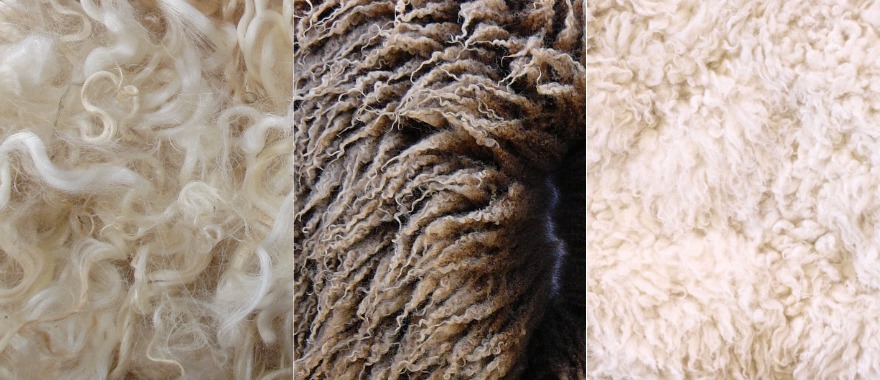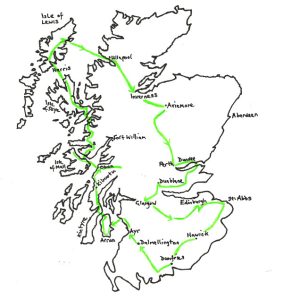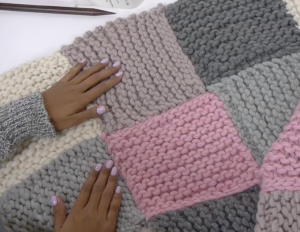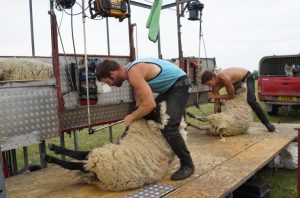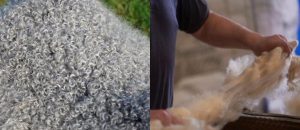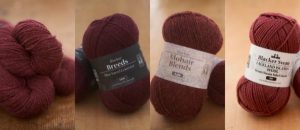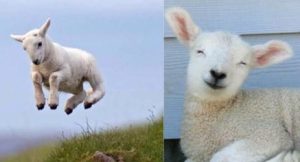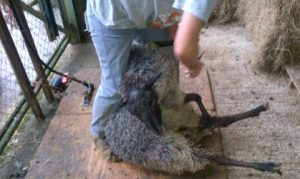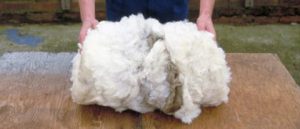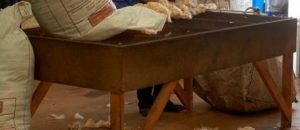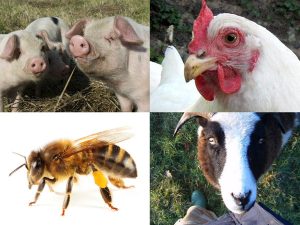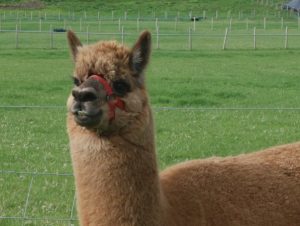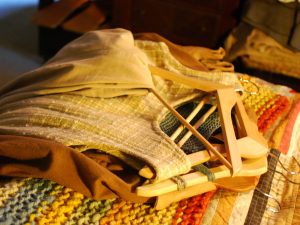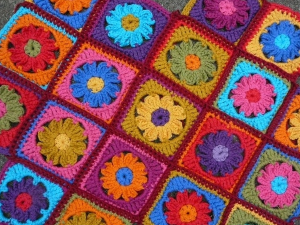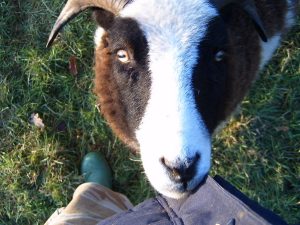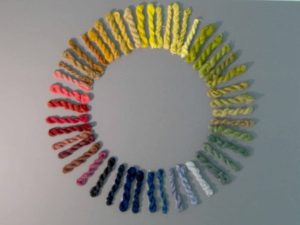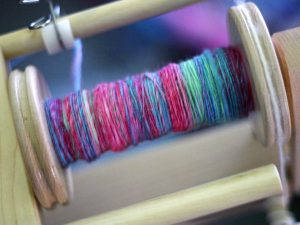In the second installment of The Wool Journey guest blog posts from Sue Blacker and colleagues at The Natural Fibre Company, we learn about a key attribute: thickness.
Wool from different sheep varies considerably – above are Wendsleydale, Shetland and Blue-faced Leicester – there are no prizes for guessing which is which! The point here is to illustrate difference in thickness of the fibres.
Thickness is measured in microns (millionths of a metre, or thousandths of a millimetre) of diameter, so the finest fibres may be around 10 microns thick and the coarser ones may be up to 50 microns thick. The finest hairs are produced by angora rabbits, cashmere goats and some sheep and alpacas are approaching this through selective breeding. For comparison, human hair ranges from around 18 microns up to 180 microns and horse hair from 50 to 150 microns.
Sheep wool is graded by fineness, using many and varied systems, such as the detailed grades of the British Wool Marketing Board which include the style as well as the fineness within each grade, and are described in detail at the BWMB website page on quality. In the past, British wool was classified by the Bradford count, which was an estimating system related to the expected fineness of yarn wool able to be produced by sheep of different breeds, but this is not much used in today’s more metric world, where the micron diameter is the guide to fineness.
Alpaca hair is classified as royal, baby, first, second and third quality, with royal being sub 20 micron, baby 20-23 micron, first quality 23-26 micron, and so on. Excellent technical nformation in considerable detail on alpaca fibre and its processing can be found in a 2003 study as a downloadable .pdf on the Quality and Processing of Alpaca by the Australian Rural Industries Research and Development Corporation website. Amongst other things this article explains the grease content of alpaca fibre, which is considerably lower than that of wool, and also the challenges of processing it compared to wool.
Mohair, from angora goats, is classified as kid (20-29 microns), young goat (usually 27-34 microns) and adult (30-40 microns). There is an excellent information page and leaflet at Mohair South Africa’s website, which also includes a list of other hair producing animals.
Because of the different type of scales on wool hairs, compared to mohair and alpaca, wool needs to be around 3 microns finer than an alpaca hair to feel the same to the touch, which is why some people may prefer alpaca to wool. Coarser fibres may also be stiffer, so that those which stick out of a yarn or fabric can irritate the skin more, and make a garment feel “itchy”.
Irritation is not the same as allergy – unless allergic to residual lanolin, if we are allergic to wool, we should really also be allergic to our own hair! It is more likely to be a combination of itch-factor, lanolin, perceptions and possibly chemicals on the fibres from processing or laundry which cause skin reactions. Since both mohair (4-6% lanolin) and alpaca (2% “grease”, apparently not lanolin according to most alpaca information sources) also contain grease, compared to 15% lanolin in merino wool and around 10-11% in crossbred wool, it is also therefore very unlikely that people will be “allergic” to wool but not to alpaca or cashmere!
The importance of thickness is that it determines both the thickness of yarn able to be made with the fibre and also the feel of the yarn to the skin:
- Technically, one might think that a yarn can be made by twisting together as few as 3-5 fibres, but in practice the limit is around 35 fibres. Thus a finer fibre can be used to make a finer yarn than a thicker fibre, and this will then determine the possible uses of the fibre, depending on the yarns which can be made from it.
- As regards feel, generally, people find yarns made of fibre thicker than around 28 microns uncomfortable next to the skin and some people are unwilling to wear anything containing fibres thicker than around 23 microns. A thick yarn can be made of fine fibres (e.g. chunky or super-chunky yarns), although it may not be as technically or aesthetically attractive as yarns made to suit the fibres best, according to the other attributes.
- The yarns below from left to right are North Ronaldsay (coare, double coat), Wensleydale (fine, lustrous) and Shetland (fine, bulky).
Finer fibres are, of course, weaker than coarser fibres, so will break more easily, whether loose, spun or woven. Therefore coarser fibres will be more hard-wearing, and typically will be preferable for carpets, upholstery or socks, while finer fibres are better suited to apparel.
Interestingly, within each breed, sheep seem to have roughly the same number of hair follicles, so smaller Merinos sheep have been shown to produce finer fleeces than larger ones and fibre breeding development is now also focussing on the number of hair follicles per square inch of skin to achieve finer fleeces.
Coming soon in Part 3 of The Wool Journey, we’ll explore further attributes of wool, including length, crimp and lustre. You can learn more about the important work of The Natural Fibre Company as a spinning mill helping wool producers add value to their products via our network directory. The original series of posts can be found here on the The Natural Fibre Company & Blacker Yarns blog.

